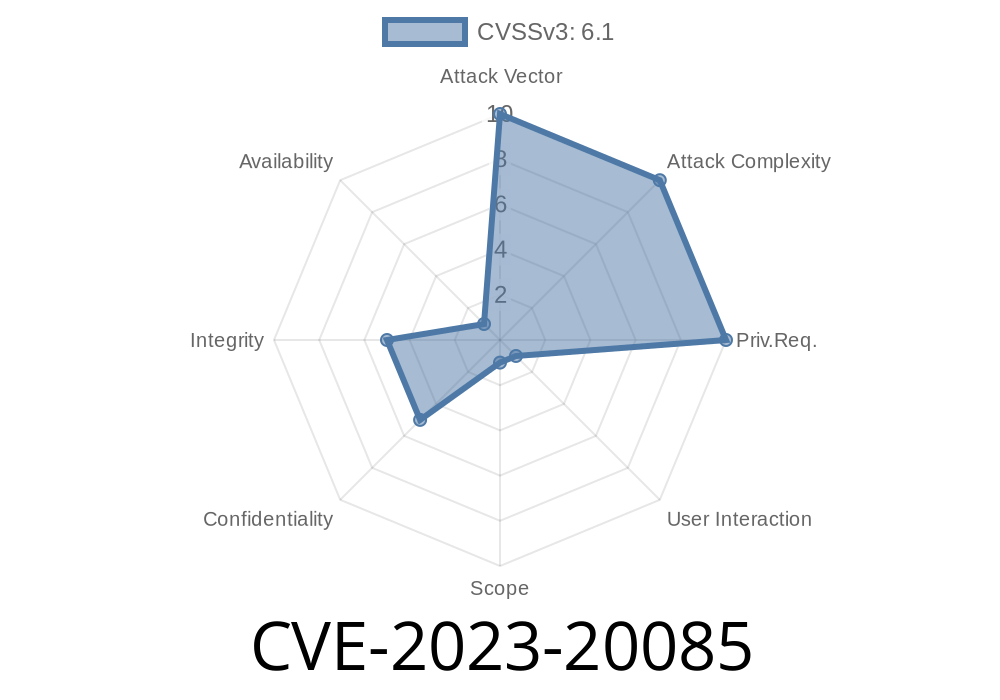A recently discovered vulnerability in the web-based management interface of Cisco Identity Services Engine (ISE) allows an unauthenticated, remote attacker to execute a cross-site scripting (XSS) attack against users of the management interface of an affected device. This vulnerability, known as CVE-2023-20085, poses a significant risk to user data and system integrity.
Vulnerability Details
CVE-2023-20085 arises due to insufficient validation of user-supplied input by the web-based management interface of an affected Cisco ISE device. By injecting malicious code into specific pages of the interface, an attacker can potentially execute arbitrary scripts in the context of the affected interface or gain access to sensitive, browser-based information.
Exploit Overview
To exploit this vulnerability, an attacker would need to carefully craft a malicious code snippet and inject it into specific pages of the web-based management interface of the target Cisco ISE device. Once injected, this code would be executed by the web-browser of any user visiting the affected page, potentially allowing the attacker to access sensitive or confidential information.
The following is an example of a malicious code snippet that could be used to exploit CVE-2023-20085
<script>
// Malicious JavaScript code.
// This code could steal sensitive information or perform actions on behalf of the user.
alert("XSS Vulnerability Exploited!");
</script>
Upon successful injection of the above code into the web-based management interface of a vulnerable Cisco ISE device, any user visiting the affected page would see an alert box with the message "XSS Vulnerability Exploited!".
Original References
Cisco, the manufacturer of the affected devices, has acknowledged the vulnerability and published an advisory with detailed information and suggested remediations:
- Cisco Advisory: https://tools.cisco.com/security/center/content/CiscoSecurityAdvisory/cisco-sa-ise-dos-xss-DYMJWnPc
Mitigation Steps and Recommendations
Users of Cisco Identity Services Engine (ISE) devices should take the following steps to protect themselves from CVE-2023-20085:
1. Apply the latest software updates - Cisco regularly releases updates that address known vulnerabilities. Ensure that your systems are running the latest version to minimize the risk of exploitation.
2. Use strong authentication and access controls - Limit access to the web-based management interface to only trusted individuals, and use multi-factor authentication to strengthen account security.
3. Implement security best practices - Follow industry guidelines and best practices, such as the Center for Internet Security (CIS) Critical Security Controls, to harden your environment against potential attacks.
Conclusion
CVE-2023-20085 highlights the importance of properly validating user-supplied input and employing strong security measures across all layers of the technology stack. By taking proactive steps to identify and remediate such vulnerabilities and implementing appropriate security measures, organizations can minimize the risks associated with potential exploits and maintain the trust and confidence of their users and customers.
Timeline
Published on: 03/01/2023 08:15:00 UTC
Last modified on: 03/10/2023 04:58:00 UTC
